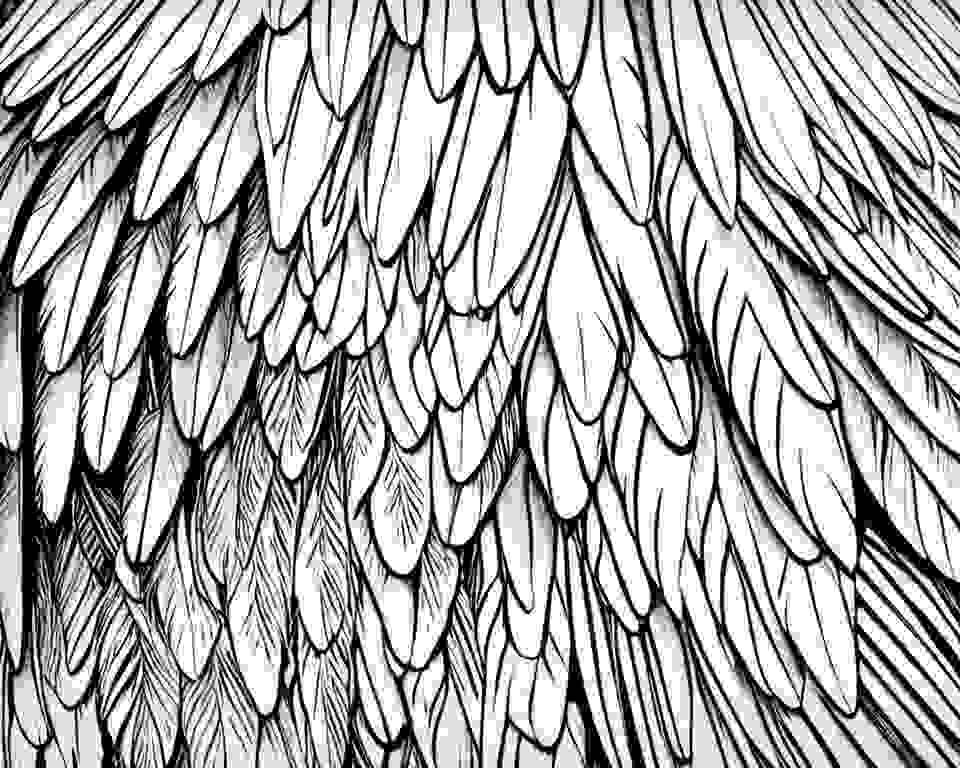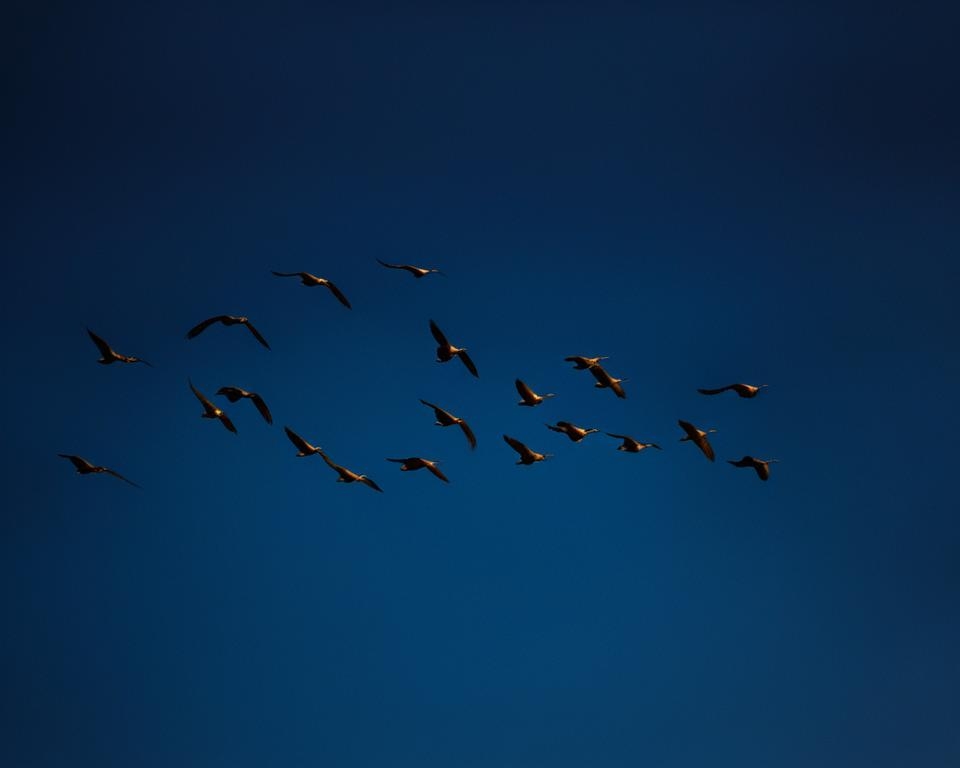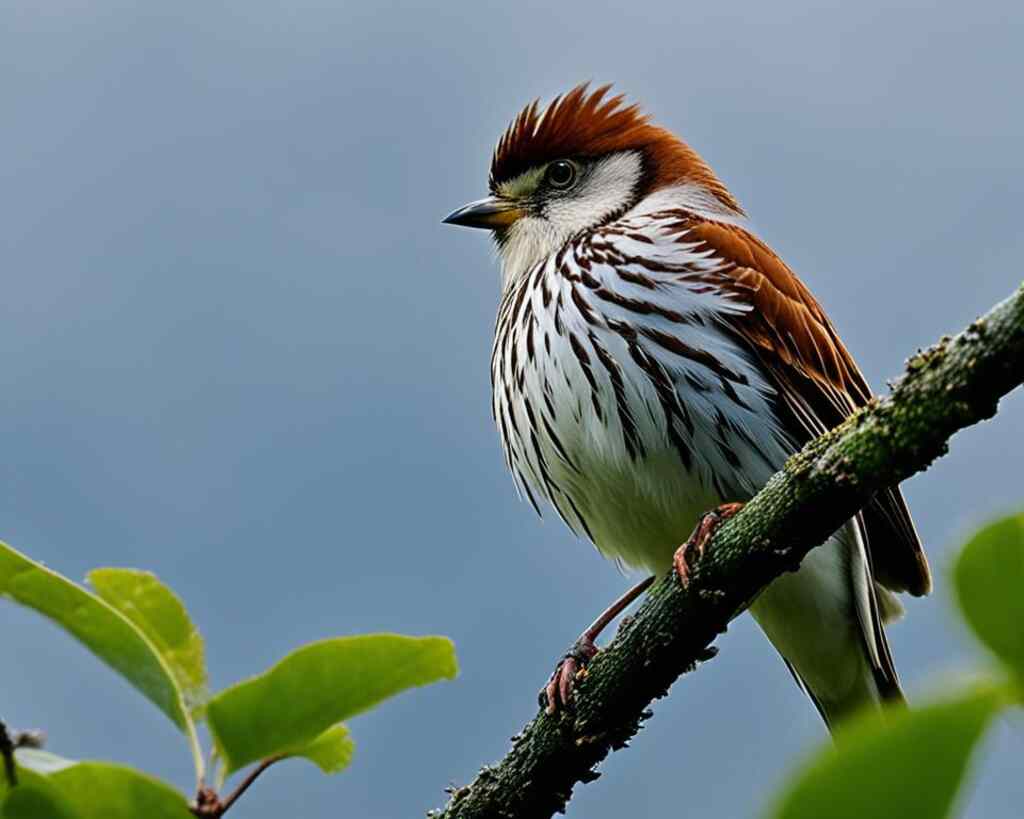Have you ever wondered if birds get tired of flying? They seem to effortlessly soar through the sky, never showing any signs of fatigue. But do they ever tire from their continuous aerial journeys? Let’s dive into the fascinating world of avian flight endurance to uncover the truth behind this intriguing question.
Birds are known for their remarkable ability to fly, covering vast distances and displaying impressive stamina. However, just like any other living beings, even birds experience fatigue after exerting themselves for extended periods.
So, how do they manage to fly for such long durations without seemingly getting tired? Let’s find out!
Table of Contents
- 1 Key Takeaways
- 2 Do Birds Get Tired of Flying?
- 3 Understanding Avian Flight and Energy Expenditure
- 4 Avian Energy Storage and Stamina Factors
- 5 Dissecting the Physics of Bird Flight
- 6 How Migratory Birds Manage Long-Distance Flights
- 7 Adaptations That Enhance Avian Flight Endurance
- 8 The Role of Sleep in Bird Flight and Migration
- 9 Extreme Avian Athletes: Record-Setting Flyers
- 10 Conclusion
- 11 Source Links
- 12 Author
Key Takeaways
- Birds do experience fatigue after flying long distances or for extended durations.
- Avian flight endurance involves factors such as muscular fatigue, metabolic processes, energy sources, and physiological adaptations.
- Understanding the mechanics of bird flight and their energy expenditure is crucial in comprehending their stamina.
- Migratory birds possess unique strategies to manage long-distance flights.
- Birds have evolved various anatomical and physiological adaptations that enhance their flight endurance.

Do Birds Get Tired of Flying?
In order to understand bird endurance limits during flight, it is essential to examine their behavior and signs of fatigue. Birds exhibit distinct behaviors when flying for extended periods, indicating the toll it takes on their bodies.
By recognizing these signs and understanding the importance of rest and recovery, we can gain insights into how birds conserve energy and push their endurance limits.
Bird Behavior During Extended Flight
During long flights, birds often alter their flight patterns and behavior. Some species may reduce their flying speed, fly at lower altitudes, or take shorter breaks mid-flight. These adjustments allow them to conserve energy and maintain endurance over long distances. It is fascinating to observe how birds adapt their flight behaviors to sustain their journey.
Signs of Fatigue in Birds
Fatigue in birds becomes evident through observable signs. Birds experiencing fatigue may display erratic flight patterns, reduced wing beats, or irregular gliding motions. They may also exhibit decreased vocalizations and reduced overall activity. These signs serve as indicators of the physical strain and energy depletion that birds experience during extended flights.
Birds’ Rest and Recovery Periods
Rest and recovery periods are crucial for birds to replenish their energy levels and recharge for the next segment of their journey. Birds will often choose sheltered resting spots, such as dense foliage or protected areas on the ground, to conserve energy and seek safety during these periods. It is essential for birds to prioritize rest and recovery to ensure their endurance and survival during prolonged flights.
By understanding bird behavior during flight, recognizing signs of fatigue, and appreciating the significance of rest and recovery, we can gain a deeper insight into the bird’s endurance limits and energy conservation strategies.
Understanding Avian Flight and Energy Expenditure
Avian flight is a remarkable feat that involves a complex interplay of mechanics, muscular activity, metabolism, and energy expenditure. To comprehend the endurance and stamina exhibited by birds during flight, it is essential to delve into the intricacies of avian flight mechanics, muscular activity, metabolism, and energy sources.
Flying Mechanics and Muscular Activity
Their wings generate lift and thrust, allowing them to navigate the skies with agility and grace. Muscular contractions in the wings provide the necessary propulsive force that enables birds to soar, glide, and maneuver through the air.
The Role of Metabolism in Bird Flight
Metabolism plays a crucial role in sustaining bird flight. During vigorous wing flapping, intense muscular exertion occurs, requiring a significant amount of energy. Birds have high metabolic rates that support the continuous energy demands of flight.
The efficient utilization of oxygen and nutrients is vital to produce the energy required for sustained aerial locomotion. The metabolic processes involved in extracting energy from food sources are finely tuned to support avian endurance and stamina.
Energy Sources: Fat Reserves and Diet
Energy for bird flight is derived from two primary sources: fat reserves and diet. Birds utilize the energy stored in their fat reserves as a crucial fuel source during prolonged flights. These fat reserves serve as an energy reservoir that can be mobilized when dietary sources are limited. However, a bird’s diet also plays a significant role in providing the necessary energy for flight.
A nutrient-rich diet consisting of carbohydrates, proteins, and fats fuels the metabolic processes involved in flight. The balance between fat reserves and dietary intake is crucial for maintaining energy levels and sustaining avian flight endurance.
Avian Energy Storage and Stamina Factors
| Energy Storage | Stamina Factors |
|---|---|
| Fat Reserves | Utilized during prolonged flights |
| Dietary Intake | Provides essential nutrients for energy production |
| Muscular Activity | Optimized for efficient wing flapping |
| Metabolic Rate | High to support energy demands of flight |
The table above highlights the key factors influencing avian energy storage and stamina. Fat reserves serve as a crucial energy source during prolonged flights, while a nutrient-rich diet provides the necessary fuel for metabolic processes.
The muscular activity in birds is optimized for efficient wing flapping, while their high metabolic rate supports the energy demands of flight.
Dissecting the Physics of Bird Flight
Bird flight physics encompasses the study of how birds generate lift and manage drag forces while in flight. Understanding these factors helps explain how birds can sustain long-duration flights and possess such remarkable flying capabilities.
One significant factor in avian flight dynamics is avian aerodynamics. The streamlined shape of bird wings allows for efficient airflow and reduces drag, enabling birds to achieve maximum speed and maneuverability. Different bird species have evolved distinct wing shapes, each optimized for their specific flight requirements.
The concepts of lift and drag are fundamental to bird flight. Lift is the force that allows birds to overcome gravity and stay aloft, while drag is the resistance birds encounter as they move through the air. Birds utilize various wing movements, such as flapping and soaring, to generate lift and control drag, allowing them to maintain stable flight and conserve energy.

By dissecting the physics of bird flight, scientists gain insights into the mechanisms behind avian endurance. These findings can have implications for aviation and engineering, providing inspiration for the design of more efficient aircraft.
How Migratory Birds Manage Long-Distance Flights
Migratory birds are known for their incredible ability to undertake long-distance flights during their annual migrations. These avian travelers exhibit remarkable navigation skills, endurance, and adaptive behaviors to successfully complete their arduous journeys. Let’s explore how migratory birds manage these challenging long-distance flights and the fascinating aspects of their migratory behavior.
One of the key factors that enable migratory birds to navigate long distances is their innate sense of bird navigation. Through a combination of celestial cues, landmarks, geomagnetic fields, and even the position of the sun or stars, these birds can orient themselves in unfamiliar territories and maintain a consistent heading.
Another crucial aspect of migratory bird endurance is their ability to undergo stopover periods during their journeys. These rest stops allow the birds to refuel, replenish their energy reserves, and recover from the physical exertion of long flights.
During stopovers, migratory birds engage in behavior such as foraging, resting, and socializing with other individuals of their species. These behaviors contribute to the birds’ overall well-being and help ensure their successful migration.

In addition to navigation and stopover behavior, migratory birds also demonstrate impressive endurance. They have evolved physiological and metabolic adaptations that enable them to efficiently use their energy reserves during long flights. By conserving energy through mechanisms such as reduced activity and decreased body temperature, migratory birds maximize their endurance and minimize the risks associated with exhaustion.
Understanding how migratory birds manage long-distance flights is not only fascinating but also essential for their conservation. By studying these remarkable avian athletes, researchers can gain valuable insights into the impact of habitat loss, climate change, and other factors on migratory bird populations. This knowledge can inform conservation efforts and help protect these extraordinary species.
In conclusion, the migratory journeys of birds involve a combination of navigation skills, endurance, and adaptive behaviors. By harnessing their innate sense of bird navigation, engaging in strategic stopover behavior, and utilizing physiological adaptations, migratory birds successfully manage their long-distance flights.
Studying their flight patterns and behavior provides valuable insights into avian biology and aids in the conservation of these remarkable creatures.
Adaptations That Enhance Avian Flight Endurance
Birds have evolved remarkable adaptations that enhance their flight endurance, allowing them to navigate long distances and sustain prolonged flights. These adaptations encompass various aspects of their anatomy, physiology, and morphology. Understanding these adaptations provides valuable insights into the incredible endurance capabilities of birds.
Unique Respiratory and Circulatory Systems
This exceptional respiratory capacity provides birds with the endurance to sustain long flights without tiring easily. Furthermore, their respiratory and circulatory systems work in perfect coordination, delivering oxygen-rich blood to their muscles, ensuring optimal performance and stamina.
Skeletal Adaptations for Flight
In addition, many bird species have fused bones and reduced skeletal elements, further reducing weight and enhancing flight efficiency. These skeletal adaptations enable birds to conserve energy and reduce fatigue during extended flights.
Feathers and Aerodynamics: A Perfect Match
One of the most distinctive adaptations in birds is their feathers, which play a vital role in flight endurance. The shape, structure, and arrangement of feathers allow for optimal aerodynamics, reducing air resistance and increasing lift during flight.
Birds meticulously maintain their feathers through preening, ensuring they remain in prime condition for efficient flight. The combination of streamlined bodies and well-maintained feathers allows birds to achieve maximum endurance and maneuverability.
The Role of Sleep in Bird Flight and Migration
Sleep plays a crucial role in the flight and migration of birds. Understanding bird sleep patterns and the effects of sleep deprivation is essential for unraveling the mysteries of avian stamina and endurance.
During flight, some birds are known to engage in sleep while remaining airborne. This phenomenon, known as avian sleep during flight, is a unique adaptation that allows birds to rest and recuperate even while on the move. Bird sleep during flight is thought to occur in short bursts, with one hemisphere of the brain sleeping while the other remains awake to maintain flight control.
Bird migration, which involves long-distance journeys, places additional demands on avian sleep patterns. Migratory birds often fly for extended periods without rest, covering thousands of miles. Research suggests that sleep deprivation in birds during migration can have significant consequences, including reduced alertness, impaired navigation skills, and decreased overall endurance.
Despite the challenges posed by sleep deprivation, birds prioritize sleep during migration. They compensate for lost sleep by taking shorter breaks or power naps to ensure they get the rest they need to maintain their stamina. These rest periods are crucial for replenishing energy reserves, allowing birds to continue their migration journey.
Sleep deprivation in birds can have dire consequences for their overall health and well-being. Sleep plays a vital role in maintaining cognitive function, immune system health, and energy conservation. Without adequate sleep, birds may experience increased physiological stress, reduced physical performance, and decreased immune responses.

The importance of sleep for bird stamina cannot be overstated. Just like humans, birds require sufficient sleep to function optimally and maintain their endurance during flights and migrations. Sleep allows birds to replenish their energy reserves, consolidate memories, and restore their physiological systems, ensuring they are ready for the challenges of their next journey.
Summary of Key Points:
- Birds engage in sleep during flight, with one hemisphere of the brain sleeping while the other remains awake.
- Migratory birds prioritize sleep during their journeys, taking shorter breaks or power naps to compensate for sleep deprivation.
- Sleep deprivation in birds can lead to reduced alertness, impaired navigation skills, decreased endurance, and increased physiological stress.
- Sleep is crucial for maintaining cognitive function, immune system health, and energy conservation in birds.
- Sufficient sleep is essential for birds to restore energy reserves, consolidate memories, and prepare for future flights and migrations.
Importance of Sleep for Bird Stamina
| Benefits of Sleep for Birds | Consequences of Sleep Deprivation in Birds |
|---|---|
|
|
Extreme Avian Athletes: Record-Setting Flyers
When it comes to long-distance bird flight records and exceptional endurance, there are some remarkable avian athletes that truly stand out. These record-setting flyers have achieved remarkable migration feats that leave us in awe of their incredible stamina and perseverance.
One such remarkable bird is the Arctic Tern (Sterna paradisaea), which holds the record for the longest migration route of any bird. These small seabirds travel an astonishing roundtrip of up to 44,000 miles (70,900 kilometers) annually, from their breeding grounds in the Arctic to their wintering grounds in Antarctica. This extraordinary journey requires immense endurance and navigation skills.
Another avian athlete known for its exceptional endurance is the Bar-tailed Godwit (Limosa lapponica). These shorebirds hold the record for the longest non-stop flight by any bird. They undertake a non-stop journey of over 7,000 miles (11,250 kilometers) from Alaska to New Zealand in a single flight, lasting up to nine days. This impressive feat requires careful energy management and efficient flight strategies.
The Emperor Penguin (Aptenodytes forsteri) also deserves recognition for its remarkable migratory ability. These flightless birds embark on a journey of up to 100 miles (160 kilometers) from their breeding grounds in Antarctica to their feeding grounds in the open ocean. Despite their inability to fly, they navigate treacherous ice and frigid waters, showcasing their endurance and determination.
These record-setting avian athletes inspire us with their ability to conquer vast distances, facing numerous challenges along the way. Their migration feats demonstrate the incredible adaptability and resilience of birds in their quest for survival.
Conclusion
Summarizing Bird Flight Stamina
After exploring the fascinating world of avian flight stamina, it is evident that birds possess impressive endurance capabilities. While they do experience fatigue after flying long distances or for extended durations, some bird species have remarkable adaptations that allow them to fly for incredibly long periods.
Avian flight stamina is influenced by various factors, including muscular fatigue, metabolic processes, energy sources, and physiological adaptations. Birds rely on complex flight mechanics and muscular activity to stay airborne, while their metabolism plays a critical role in energy production and expenditure. These incredible creatures derive energy from fat reserves and their diet during flight, ensuring their endurance is sustained.
Implications for Bird Conservation Efforts
The insights gained from studying bird flight stamina have important implications for bird conservation efforts. Understanding the energy demands and limitations of birds during flight can help inform conservation strategies that protect and preserve their habitats. By ensuring the availability of sufficient food sources and suitable resting areas, we can support their endurance and overall well-being.
What We Can Learn from Avian Endurance
Birds’ endurance and adaptations provide valuable lessons that can be applied to our own lives. Their ability to conserve energy, optimize flight mechanics, and adapt to environmental challenges demonstrates resilience and efficiency. We can learn from their strategies to enhance our own energy management, physical stamina, and conservation practices.


